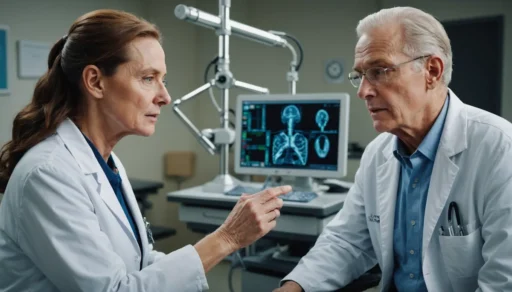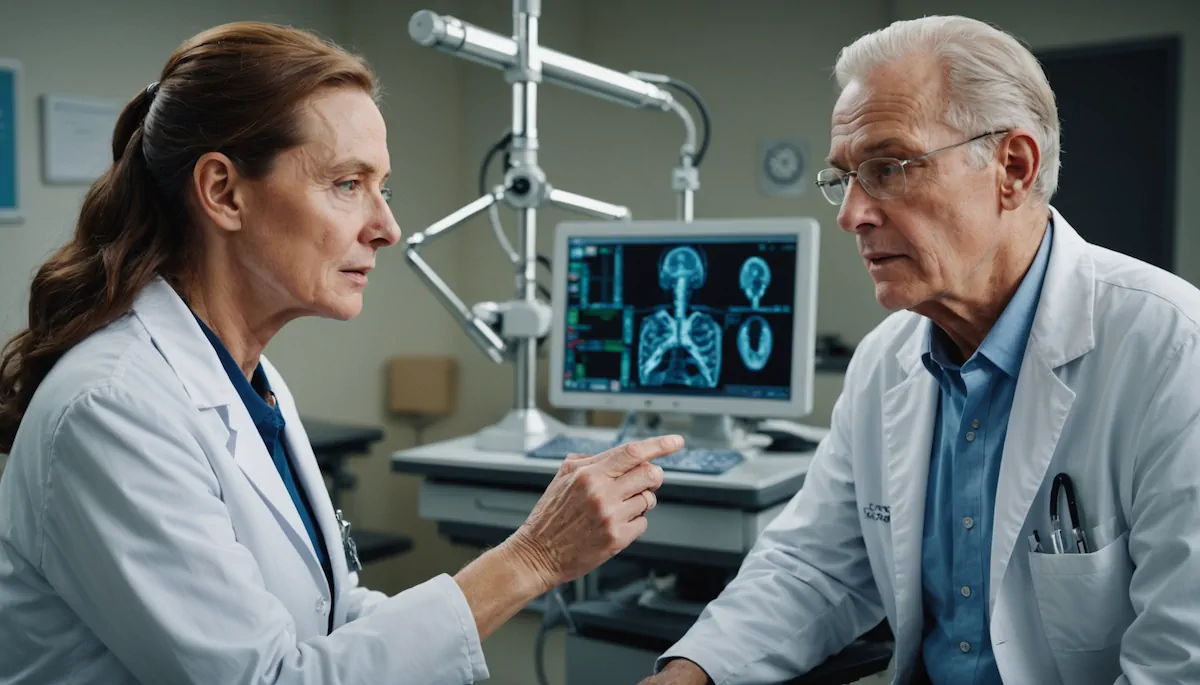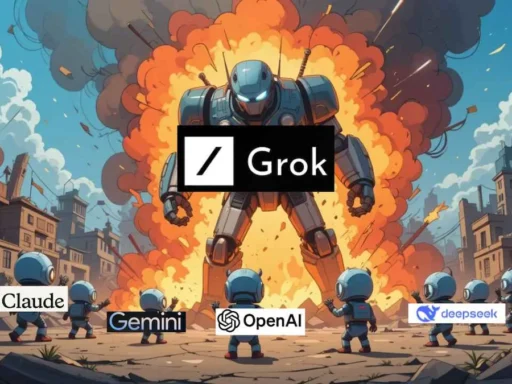You lose your voice—then what?
You’re in meetings but can’t talk. Friends visit, but you can’t reply. You’re alive, aware, and screaming in your mind but no sound comes out.
For millions of stroke survivors, this isn’t a sci-fi plot. It’s every day.
But something’s cracking this silence wide open. It’s brain-computer interface tech merged with AI—an upgrade not just to speech, but to existence itself. We’re not talking about predictive text on iPads. We’re talking about implants that decode your thoughts and speak for you.
Let that land.
Today, we’re diving into how AI and neural implants are rewriting the rulebook on stroke recovery—and how the first generation of patients is using nothing but thought to talk to the world again.
Introduction: The Rise Of Brain-Computer Interface (BCI) Systems
We’re seeing something wild emerge at the intersection of neuroscience and machine learning—brain-computer interface (BCI) systems that don’t just assist the brain, but collaborate with it.
These aren’t clunky headsets or 1990s-era voice tools. Think finer. Think deeper. We’re talking about neural implants that embed into the brain’s surface or cortex.
The tech reads your brain’s electrical signals at lightning speed—signals you generate just by trying to talk, even if your body won’t follow through anymore.
And that matters, especially for stroke survivors.
After a major stroke, especially one that slams into the brainstem or motor cortex, the body might be motionless—but the mind’s still lighting up like Times Square on New Year’s.
That’s where the new wave of AI enters.
Using large-scale neural networks trained on individual brain data, these systems decode electrical patterns from speech intention and output actual words.
The craziest part? The delay is down to 80 milliseconds. That’s faster than the time it takes your eyes to blink.
So yeah, it’s not just assistive anymore. It’s restorative.
Current Challenges For Stroke Survivors In Communication
Let’s stop pretending this is just an inconvenience.
Stroke hits hard. Globally, over 12 million people will suffer a stroke this year, according to data from WHO. Around one-third of them will end up with aphasia—meaning language, memory, cognition, or articulation gets wiped out.
That’s 4 million voices going mute. Every. Year.
Now imagine the ripple.
You’re cognitively intact, but can’t say “I love you,” “I’m in pain,” or just “yes.” It’s more than silence—it’s social death. Isolation becomes inevitable. Depression spikes. Families get disconnected.
The emotional toll? Brutal.
And the solutions? Mostly outdated:
- Speech therapy: Works for some, but needs months (sometimes years) and doesn’t guarantee recovery.
- Communication apps: Cool in theory. But finger movement’s often shot. No hand, no help.
- Eyegaze systems: Slow, awkward, robotic. You’re clicking letters to spell something a 5-year-old could say in two seconds.
Here’s what’s worse—none of it returns someone’s original voice.
That’s the part most people miss. All traditional tech is about replacement. The new AI implants? Restoration.
We’re not asking, “How can we help them say something?”
We’re asking, “How do we let them say exactly what they meant, in their own voice, in real time?”
Breakthrough Technology: AI Neural Implants Enabling Speech Recovery
So how does this magic happen?
At the center: implantable AI paired with real-time brain decoding.
Here’s how that unfolds:
First, a thin array of electrodes is placed over or inside the motor cortex—the area that fires electrical signals when you try to move or talk. Even if your muscles don’t work, your neurons still light up when you try. That’s the input layer.
Then, those electrical spikes get processed by a high-speed decoder—usually on devices powered by NVIDIA V100 chips running custom PyTorch models. This is where things get sci-fi.
Using deep learning, the AI model gets trained on YOUR brain’s patterns—how you internally think “yes,” or shape the word “coffee.” It learns to predict your speech not based on what you say, but what you tried to.
Data from UCSF studies shows vocab sizes scaling from 50 to 125,000 words with up to 97.5% accuracy across long-term usage.
Now here’s the kicker: once trained, the system converts your thoughts into synthetic speech, often reconstructing your original voice from pre-injury recordings, like wedding videos or family calls.
What comes out isn’t robotic. It sounds like you. Just with machine assistance.
One more insane stat—delay time between thought and output is now around 80 milliseconds. That’s like having a conversation where the tech blinks as fast as you can think.
And unlike text-to-speech tools, you’re not spelling words. You’re forming them in your mind, and the system decodes the raw intent.
That’s not a user interface. That’s a lifeline.
Case Studies: Neural Implants In Action
Let’s meet the faces behind the data.
First: Ann Johnson.
She lost her voice to a brainstem stroke in 2007. For 18 years, she couldn’t speak. Nothing—not a word, not a vowel. Communicated only through head-motion tech at 14 words per minute.
Then came the breakthrough.
In 2025, researchers implanted a non-invasive cortical array. Within hours of training, she achieved 90.2% accuracy across a 1,024-word vocabulary—and her system now communicates at 80 words/minute.
That’s 6x faster than her old device.
Even more powerful? Her voice was cloned from recordings captured on her wedding day. Her daughter heard her mother’s real voice for the first time since third grade.
Now meet Pancho.
A bilingual stroke survivor, Pancho worked with UCSF researchers trained on both English and Spanish neural data.
Using the same neural implant approach with multilingual AI models, he reached 75% sentence decoding accuracy across both languages.
This shattered long-held neuroscience theories that different brain areas control different languages. Turns out, the same region fired in either tongue.
Both of these cases reflect the full-stack evolution:
| Metric | Old Systems | Neural AI Implants (2024–2025) |
|---|---|---|
| Speech Speed | 14 WPM | 80 WPM |
| Delay | ~8000 ms | ~80 ms |
| Vocabulary | ~50 words | Up to 125,000 words |
These aren’t lab tests anymore.
They’re real-world indicators that the brain is back on the mic—and this time, with an AI translator riding shotgun.
The Role of AI in Speech Reconstruction
Imagine losing your voice for 18 years—and then hearing it again, not as a stranger’s simulation, but your own. That’s what Ann Johnson experienced after suffering a brainstem stroke in 2007. In 2025, she spoke again using an AI implant that reengineered her speech in real-time. It didn’t just translate thoughts—it reconstructed personality, cadence, and warmth. AI in stroke recovery is no longer just about translating neural blips into sound. It’s about rebuilding identity.
Voice cloning sits at the heart of this revolution. By pulling audio from milestones like wedding speeches or home videos, personalized voice synthesis now replicates the exact pitch, tone, and rhythm unique to each person’s speech before injury. For Ann, her system rebuilt her voice using wedding footage, enabling both comfort and authenticity. This isn’t just sentimentality—it boosts cognitive connection, familiarity, and confidence in conversations.
The underlying tech? Generative AI models that adapt dynamically. Unlike early setups limited to static word banks, today’s systems learn the user’s linguistic habits over time. Think of it this way: Your neural implant doesn’t just remember what you say—it learns how you say it. Over months, these systems accommodate pronunciation quirks, micro pauses, even sarcasm or multilingual slang. Spanish-English users like Pancho from a 2024 UCSF study saw 75% bilingual sentence decoding, with signs of further improvement as the AI dialed into his expressive patterns.
Speed, clarity, and nuance—those are the holy trinity for any system looking to replicate human speech. In 2023, lag times during neural decoding could stretch conversations into awkward pauses. Now, with latency down to 80 milliseconds, conversations unfold almost in sync with thought. Pair that with a 125,000-word vocabulary—up from 50 just two years ago—and you have prosthetic speech that doesn’t feel robotic.
Generative speech AI in stroke recovery is no longer about making sound. It’s about making sense. It doesn’t just translate brain signals—it translates who someone is into speech they recognize as their own.
Rehabilitation Technology Advancements
Speech loss is just one wound after a stroke. Recovery is tangled in hours of therapy, repetitive tasks, and feelings of disconnect. But AI-infused wearables and diagnostics are bringing agility back to the rehab journey—both for clinicians and survivors.
Think smart sneakers for the voice. Wearable AI embedded in headbands, electrodes, or even posture trackers now measure subtle muscular engagement during speech attempts. These devices nudge patients to try again by offering live feedback—an essential part of neuroplasticity. When paired with movement tracking, they also identify when compensatory gestures start interfering with authentic recovery.
Speech isn’t just biological—it’s behavioral. That’s where virtual environments come into play. Simulated conversation zones now allow patients to practice real-world dialogue safely, from ordering coffee to negotiating rent. It minimizes the emotional toll of failure while sharpening fluency. In some systems, avatars respond in real time based on the user’s vocal rhythm, not just the words.
Precision makes the difference between fast recovery and chronic frustration. Real-time diagnostic tools powered by machine learning are changing how we track patient progress. Instead of monthly visits, therapists can now assess symptoms on a daily, even hourly basis. AI models trained on tens of thousands of speech instances—from stroke cases to mild dysarthria—now detect anomalies or regressions long before human ears would pick it up.
This is not just about faster recovery. It’s about giving stroke survivors a proactive role in managing their rehabilitation. The AI implant systems combine rehab with real information—not hope—but data-powered hope.
Prosthetic Speech: A New Frontier in Assistive Technology
For decades, assistive tech for speech meant pointing at symbols or using clunky head-controlled keyboards. It wasn’t speech—it was survival. But AI-driven speech prosthetics are changing the definition of communication for stroke survivors. This isn’t outsourcing voice to a machine. This is restoring the human ability to speak—even when the body can’t.
The leap from mechanical aids to neural implants mirrors the shift from dial-up to 5G. Instead of physically navigating menus, users now think—they merely intend to speak. AI systems decode that neural signal, interpret its purpose, then generate clear, fluent speech. And it works for people previously considered unreachable, like those with bilateral motor damage or locked-in syndrome.
Patients like Pancho, who now switches between English and Spanish seamlessly through trained neural prosthetics, show what’s possible when dual-language neural patterns are understood. By tapping into shared cortical areas—debunking ideas that bilingual brains must be treated differently—AI has raised a new standard for inclusivity.
But what happens when the person can’t form words mentally either? That’s where next-gen prosthetics are aiming: decoding meaning, not just speech. For patients with aphasia or severe cortical degradation, emerging research is focused on tapping higher brain areas tied to semantic intent. Instead of syllables, the AI looks for concepts—an entire sentence’s meaning—before verbalizing it.
Here’s the line we can’t cross: when efficiency starts to erode agency. AI doesn’t get final say on what someone “meant to say.” Autonomy means patients choose output, review suggestions, and even edit tone. That’s non-negotiable. These tools must remain extensions of self—not replacements. The ethics of prosthetic speech are not tech luxuries—they’re survival guidelines.
The Mechanics of BCI Systems and Neural Implants
How does a thought become a sentence? Behind the scenes of speech recovery lies the complex world of brain-computer interfaces (BCIs)—systems that flirt with telepathy and demand silicon precision. But not all implants are built the same, and their tradeoffs shape the future of stroke rehabilitation.
Let’s break down two camps: non-invasive systems vs. implantables. Non-invasive options, like those used in epilepsy monitoring, use surface electrodes to track neural activity. Low risk, easier setup—but often less precise. In contrast, intracortical implants dive deeper, offering richer data but requiring surgery and higher risk profiles. UCSF and UC Berkeley’s flagship trials leaned toward surface-level systems to make scalability realistic, especially for elder patients.
The breakthrough isn’t just in electrode placement—it’s in the algorithms reading them. AI-trained decoders can now interpret neural spikes as full words and phrases, not just isolated syllables. The latest systems decode speech chunks every 80 milliseconds—lower than an average human blink. That’s how Ann Johnson’s avatar can speak at 80 words per minute—almost six times faster than the old eye-gaze devices.
Hardware’s evolution has to match software ambition. Vocab jumps—from 50 to 125,000 words—only work if your system can process that memory without melting down. The use of NVIDIA’s V100 GPUs accelerated real-time rendering so drastically that bilingual models could emerge, decoding dual-language thought patterns without second-guessing.
BCIs are no longer hospital-bound gear. Remote-friendly models are in the works, syncing directly with rehab apps and care team dashboards. A stroke survivor can now perform speech exercises at home, and their neurologist sees the neural metrics live. This isn’t just telemedicine. It’s full-spectrum neural care.
With four-plus years of reported device stability in early subjects and generative AI that evolves past initial training stages, this tech isn’t a prototype. It’s a platform—one that asks if the brain can update its voice with the same agility as a software patch. The answer? It’s starting to look like yes.
Medical Innovations Redefining Stroke Recovery
What if you could speak again after 18 years of silence? If you’re reading this wondering whether AI-driven neural implants are just hype—consider this: stroke survivors are not only regaining mobility but also regaining their voice. Literally.
After a brainstem stroke left Ann Johnson unable to speak for nearly two decades, she now holds fluent conversations—thanks to an AI implant decoding her brain signals in real-time within 80 milliseconds. This kind of breakthrough isn’t luck. It’s the result of tight collaboration between brain-computer interface engineers, neural scientists, and rehab physicians.
These aren’t your average hospital upgrades. We’re seeing hardware originally used for epilepsy now repurposed for speech decoding. Combine that with generative AI capable of cloning voices from old recordings, and we’re witnessing precision-crafted rehab programs tailored in a way traditional recovery never could.
Here’s what’s working:
- Personalized decoding models speed up recovery—some patients hit 90% accuracy in just over an hour.
- Remote monitoring keeps systems adapting months post-surgery, reducing regression rates.
- Large-scale AI trials (71,000+ patients tested) have doubled life-saving procedures like thrombectomy.
This isn’t about swapping therapists for robots. It’s about giving back agency to people tech often forgot. Stroke recovery isn’t a one-size game anymore—AI lets us tailor the playbook for every single brain.
Challenges and Ethical Considerations
Let’s talk costs. Cutting-edge neural implants don’t come cheap. And when they do—the waitlists stretch for years. In high-income countries, clinical access is expanding. But globally? It’s still just theory for many.
Now imagine uploading your inner voice—literally—into an AI interface. Feels empowering? Maybe. But also feels like handing the keys to your mind to algorithms stored in someone else’s cloud.
We don’t just decode brain activity anymore—we mine it. AI-driven implants record neural signals 24/7. Who owns that data? How is it stored? Who gets access if the patient’s condition worsens? Right now, the answers are shaky at best.
That brings us to a bigger problem—exclusion by design. Today’s implants rely on intact speech motor areas to work. That leaves thousands of stroke survivors with aphasia or severe cognitive issues locked out from the future of medicine.
What do we do about it?
- Expand the scope—devices must learn how to work with disordered or irregular brain activity.
- Invest in decoding higher cognitive tasks, not just physical speech mapping.
- Push for international cooperation to balance funding across borders.
Consent is the next ice bath. Before a neural implant goes in, patients need to understand it’s not just a medical device—they’re inviting machine learning into their speech center. Pre-surgical consent forms barely scratch the surface.
We can’t shrug this off. As devices get smarter and less invasive, we need standardized protocols for autonomy, opt-outs, and post-implantation data governance. Every patient should control their mind’s metadata.
Bottom line? AI stroke implants can be holy tech—or digital overreach. It depends on how we hardwire rights into the rollout.
Future Directions for AI-Driven Neural Implants
Where this tech’s going next makes last decade’s rehab plans look ancient. Forget lab-bound systems with trailing wires. The next wave? Fully implantable AI speech decoders—no charging cables, no headgear, no lab visits.
Early-stage prototypes under development are targeting wireless, self-powered implants that sync locally without cloud dependency. That’s game-changing for rural stroke patients or anyone far from major care hubs.
But the real shift comes from decoding language intent not just speech sound. Most current systems interpret motor signals linked to phonemes. What if we could capture the core message before the brain even builds the words?
Researchers are now exploring higher-order language regions—areas that light up during storytelling, planning, humor, or forming abstract thought. If AI can tap into those zones, we’re talking novels, not just grocery lists, coming straight from thought to text.
And it doesn’t stop at stroke. Similar interfaces are being trained on Parkinson’s, ALS, and even early-stage Alzheimer’s patients. The long game? AI implants as dynamic neuro-cognitive assistants—restoring lost voices, stalling neurodegeneration, maybe even preventing crises before they start.
We’re at the edge of a new brain frontier. Not everyone will cross it fast, but the map is getting clearer by the day.
Inspiring Possibilities for Patients’ Lives
Let’s bring it back to the people this actually changes. Ann Johnson didn’t just regain speech—she got her old voice back, right down to the laugh from her wedding tape. She doesn’t just talk—she communicates with emotion, sarcasm, love.
Or take Pancho—a bilingual stroke survivor now able to speak again in both Spanish and English, thanks to neural patterns decoded across languages. Before his implant, family meals were silent. Now? He’s back sharing stories with his kids, switching languages mid-sentence like it never left him.
These aren’t fantasy cases. These are real people locked in their bodies who finally got a way out—with help from code, voice synthesis, and high-precision surgical science.
It’s not just about speaking—it’s about being heard. AI-driven implants don’t just restore function—they rebuild connection. They let people argue again, flirt again, joke again.
Stroke used to mean mourning what you lost. Now it’s shaping up to become a second chapter waiting to be rewritten—by choice, not just by chance.






